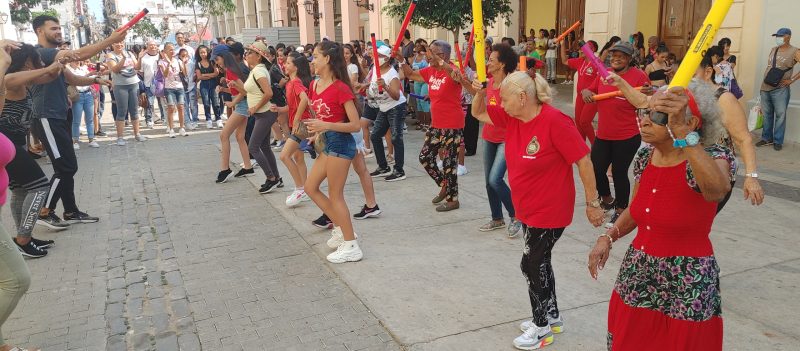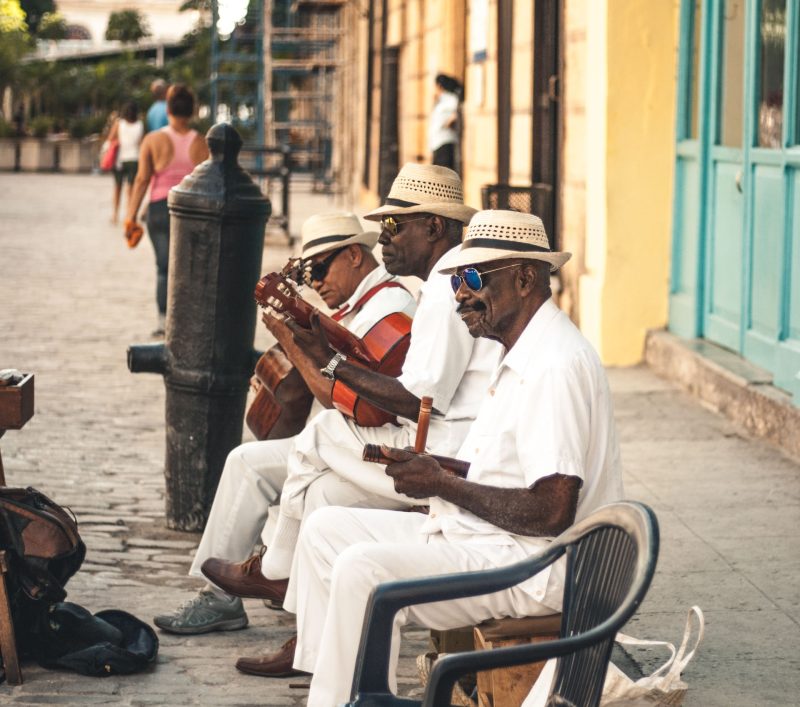Tourists can join street dances
IAN STALKER
Tourists visiting Old Havana have a chance to better their salsa skills with some Cubans who have had plenty of time to hone their’s.
The long-standing Convent of Our Lady of Bethlehem now serves in part as an activities centre for seniors, who weekly head to the a centre-fronting street to work on the likes of salsa skills, putting themselves somewhat energetically through the paces while accompanied by teenagers who have enrolled at the nearby Litz Alfonso Dance Cuba academy.
And says Gretel Cylvester, a tour guide with San Cristobal Travel Agency foreigners who stumble across the dancers and then hope to improve their Latin dancing skills don’t have to remain onlookers.
“They will invite you to join them,” she says of the Cuban dancers, who sport identifying red t-shirts and some of whom appear to be in their 80s. “We are Cuban. We welcome everyone.”
Tourists exploring Old Havana tend to be surprised when coming across the mature dancers.

Cylvester realizes that the elderly Cubans and the probably more youthful foreign tourists who decide to join them in a street dance might not have a common language but adds they will still be able to communicate by pointing.
“It’s very easy. Most people in Cuba dance salsa,” Cylvester says of picking up the footwork from her dance-mad compatriots.
The dancing is part of a center activities program designed to keep seniors active, with another center group recently earning well-deserved applause by entertaining tourists with a rousing Old Havana street performance of classic Cuban song Guantanamera.
Other centre activities include cooking and sewing.
The Convent of Our Lady of Bethlehem dancers take to the street early in the morning, avoiding midday heat. Their classes run 30 to 40 minutes and include lively salsa but also music with a slower tempo.
Cuba has given the world many dance genres, including salsa, cha-cha-cha, son and mambo, and Havana and other Cuban cities have Latin dance schools for those who want to better their footwork, including foreigners
“Cubans are very good dancers, we say that it is in our blood,” says Lessner Gomez of the Cuba Tourism Board. “The reality is that Cubans love to party and love dancing and they learn at a very young age.

“Dancing is a very important part of Cuban life and it is directly connected with Cuban culture. It is our way to express joy and sensuality. Dance floors and discos fill up at night but when the music gets going Cubans can dance on the streets.
“Anybody interested in dance should consider learning how to dance at Cuban dance schools, Not only will they learn the steps at the school but also they will have plenty of opportunities to practice and any Cuban will be ready to teach them some serious smooth moves.”
Toronto travel personality Steve Gillick witnessed a performance by the energetic seniors during a May Havana visit and was impressed, saying they “displayed their dance steps with rhythm and passion. And then when the students joined the seniors, the smiles only got bigger.
“It was a wonderful scene that reflected the importance of music to the life of Cubans of all ages, and the inseparable connection between music and dancing to the salsa beat. For the audience of locals, tourists, and international journalists, the sight of senior citizens dancing in the street was a heart-warming tribute to the spirit of staying active and involved in the community. And it got everyone swaying — and smiling — to the music.”
Cylvester suggests that foreigners who do decide to take instruction from Cubans on dancing will find it rewarding, as Cubans love both dancing and sharing their dance skills with others.
“It’s in our DNA,” she says of Cubans and dancing.

















